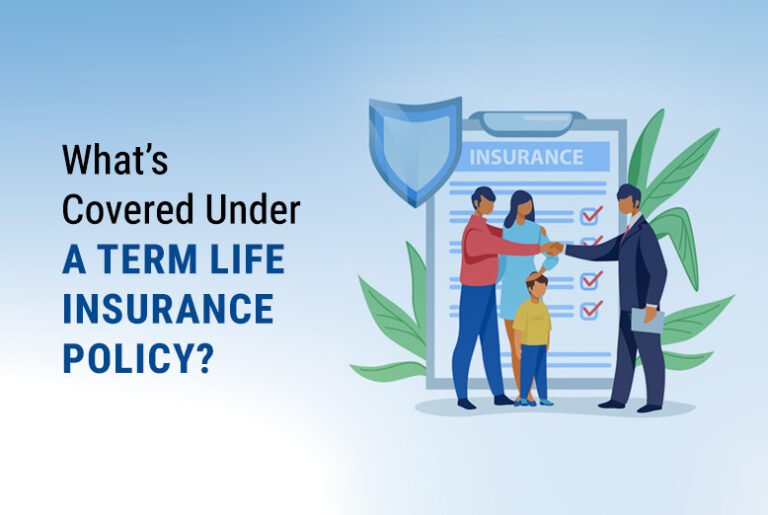The cheapest and simplest form of life insurance is a term life insurance policy that will leave your family members financially secure in case of your death. The policy, as the name suggests, insures the policyholder for a specified time or “term”. If the policyholder passes away during the term period, the nominee receives the death benefit. While this might seem straightforward, oftentimes there is something ambiguous in what is actually included under these policies. This article delves into the details of term life insurance coverage, describing how it functions, exclusions to watch out for, and how you can make the most of it with devices like a term plan calculator.
Death Due To Natural Causes or Illness
One of the greatest benefits of a term life insurance policy is the payment of the death benefit to the nominee when the policyholder dies from natural illness or disease. Due to age-related diminishing health or terminal conditions like cancer or cardiac failure, the policy provides the family with a fiscal cushion to pay for expenses, existing liabilities, or maintain their lifestyle.
One must disclose all medical conditions in good faith while buying the policy; otherwise, claims may be turned down later on.
Death caused by Accidents
Death caused by accidents is another feature of most term life policies. If an individual meets with a sudden untimely death through road accidents, natural calamities, or work-place accidents (particularly for hazardous occupations), the nominee receives the amount assured.
The optional riders are the accidental death benefit rider provided by certain insurers, which pays an additional sum over and above the basic sum assured in case of accidental death. This is especially helpful for those working in hazardous occupations or frequent travelers.
Terminal Illness Coverage
The majority of modern term life insurance policies have terminal illness coverage as an included provision or a rider. With this provision, if the policyholder receives a terminal illness diagnosis that will ultimately result in death within 6–12 months, the insurance company can payout the death benefit early. This can help the insured pay for medical expenses, terminal care, or making arrangements for the final days in dignity.
Always check the named list of illnesses and the meaning of ‘terminal’ in term life insurance policy conditions.
Critical Illness Coverage (as a Rider)
Not part of basic coverage, but usually taken up by a term policy, are critical illness riders. These settle a sum of money when the insured develops life-threatening ailments such as cancer, stroke, kidney failure, or major organ transplant. The critical illness benefit differs from the death benefit and is intended to assist the insured in financing medical treatment and recovery expenses.
It must be mentioned here that the policy continues even after a critical illness claim (excluding one-time payout policy), and the death benefit remains unchanged in some cases.
Disability Coverage (Optional Rider)
Permanent disability rider is also a handy addition. If the policyholder incurs an accident or sickness making him/her completely and permanently disabled and incapable of working, this rider assures a lump sum or staggered payment. This coverage protects against loss of earnings and is especially valuable to families with only one breadwinner.
Even fewer policies exempt future premiums when the policyholder becomes permanently disabled so that coverage is not lost at any additional cost.
Waiver of Premium Benefit
The waiver of premium rider is a smart feature that keeps your policy active even if you’re unable to pay premiums due to disability or critical illness. This means the insurance company will waive future premiums, but your policy coverage remains intact. It offers tremendous peace of mind, especially in situations where the insured’s ability to earn is compromised.
Suicide Clause
It’s also interesting to know about the suicide clause—a standard exclusion in all term life policies. Typically, in case of death by suicide of the policyholder within the first 12 months of the policy, the nominee is not paid the entire sum assured. Instead, all insurers return only the premiums paid (excluding tax and charges).
But after this initial exclusion period is completed, the death benefit has a tendency to be paid even on death by suicide.
Lifestyle-Related Risks
There are also certain term life policies that will pay out in case of death caused by lifestyle-related diseases such as heavy drinking, smoking disease, or obesity-induced complications. But these are only payable in the case of full disclosure when buying the policy. Misrepresentation or lack of disclosure can lead to claim rejection.
With a term plan calculator while disclosing your health and lifestyle information, you get an accurate premium quote and make it transparent that is required for easy settlement of claims.
Covid-19 and Other Pandemics
After the pandemic, the first thing on everyone’s mind is whether deaths due to COVID-19 are covered under the term plan. Most insurers now particularly cover death from a pandemic within natural causes, provided that the policy was active at the time of the diagnosis.
New purchasers, however, need to study policy terms closely because pandemics exclusion and inclusion terms could vary depending on the insurer and the time of purchase.
What Is Not Covered Under a Term Life Insurance Policy?
Although term insurance provides extensive coverage, certain situations are typically not covered:
- Death in the course of illegal acts or criminal offence.
- Death while under the influence of alcohol or drugs (other than prescribed).
- Self-injuring injuries (during the suicide exclusion period)
- Participation in risky sports or activities (other than specially insured).
- Existing illnesses were not disclosed at the time of policy purchase.
Having this knowledge helps manage expectations and ensures claim acceptability when required.
Choosing the Perfect Cover with a Term Plan Calculator
Selecting the right sum assured and riders is a personalised exercise, and a term plan calculator is a useful tool for this purpose. Just enter your age, income, lifestyle and habits, and financial goals, and you can obtain a personalised estimate of premium and suitable coverage. This makes sure that your family’s needs are suitably taken care of, whether it is paying off a home loan, fulfilling children’s education, or meeting expenses at home.
Also, calculators allow you to compare several plans from different insurers, enabling you to make a better-informed choice.
Conclusion:
A term life insurance policy is not just an agreement; it’s a promise of money security for your loved ones in case of your demise. While the basic product is still the death benefit, the range of covers has widely expanded with the variety of optional riders, such as critical illness, disablement, and waiver of premium, being on offer. The riders transform a basic term plan into a complete risk management tool.
Through the assistance of tools like a term plan calculator, customers are able to make wise decisions, select the right sum assured, and customise their policies according to life stage and financial commitments. In times of uncertainty, a wise term life insurance policy gives you the peace of mind for you and your loved ones.
Also Read: How to Get TATA AIG Car Insurance in Minutes? A Step-by-Step Guide



